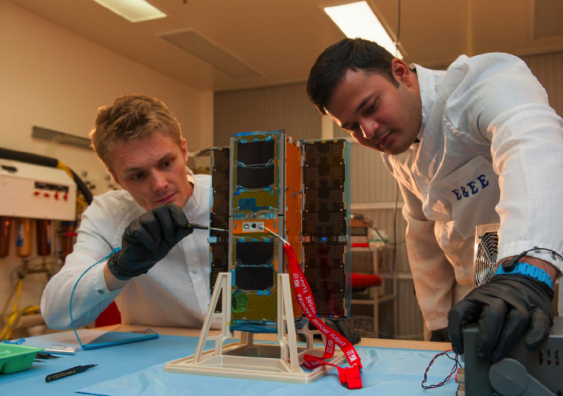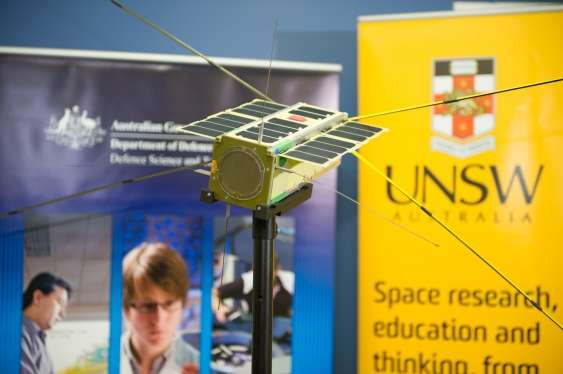CubeSat for Australian Defence innovation ready to fly

A state-of-the-art miniature satellite that will play an important role in developing Australian Defence space capability is ready for launch into orbit after passing gruelling tests that simulate the harsh environment of space.
A team of space engineers from UNSW Canberra (the University of New South Wales' campus at the Australian Defence Force Academy) and Defence Science and Technology Group, put the satellite through its paces in 24/7 thermal cycling, with the help of spacecraft test engineers from the Australian National University at the Advanced Instrumentation Technology Centre on Mt Stromlo.
"The cubesat that we tested is the first of two in a joint program called Buccaneer to build Australian capability to develop and fly satellite missions," says Professor Russell Boyce, Director of UNSW Canberra Space.
Buccaneer will perform calibration experiments for Australia's world-leading over-horizon Jindalee Operational Radar Network (JORN) from Low Earth Orbit, several hundred kilometres above the surface of the Earth.
Buccaneer will also contribute to aspects of UNSW Canberra Space's research program, looking at ways to more accurately predict the orbits of space objects.
"Satellites and space debris move around erratically due to space weather and atmospheric drag, even at high altitudes. These movements are not well understood and so are very hard to predict, and are a major reason why collisions in space are a serious risk," says Boyce.
"Being able to avoid collisions in space is essential if we are to safeguard the space-based technologies upon which the world depends."

Importantly, Boyce says Buccaneer is a stepping-stone to an increasingly sophisticated home grown Australian space capability that can take advantage of rapidly transforming technology and a boom in the Asia-Pacific space sector.
Dr Doug Griffin, UNSW Canberra Space's Flight Mission Lead, says miniaturisation of electronics and sensors, and a reduction in satellite launch costs, are opening the door to potentially game-changing applications of innovative small spacecraft.
"These will lead to new ways to inexpensively perform remote sensing – for example, for environmental monitoring, national security, and much more – and improve communication links."
UNSW Canberra has made a $10 million strategic investment to build a domestic space program, which includes assembling a team of space engineers and scientists.
"Part of our investment involves bringing world-class Australian space talent back from the international space sector and reversing the brain drain," says UNSW Canberra Rector, Professor Michael Frater.
UNSW Canberra's Master of Space Engineering and Master of Space Operations degrees offer unique up-skilling for Defence and non-Defence professionals working in the space sector and related industries.
"UNSW Canberra is playing a key role in the transformation of space technology and helping Australia to become an important space-faring nation in ways that make economic sense and meet national needs," Professor Frater says.
Provided by University of New South Wales




















